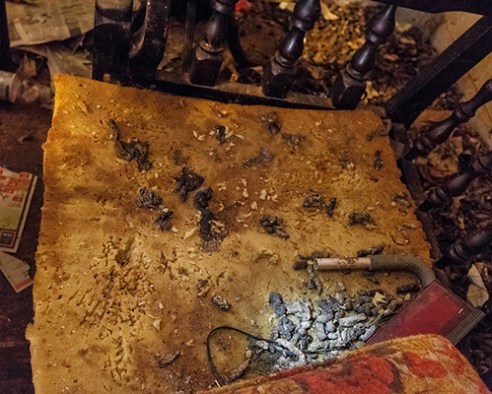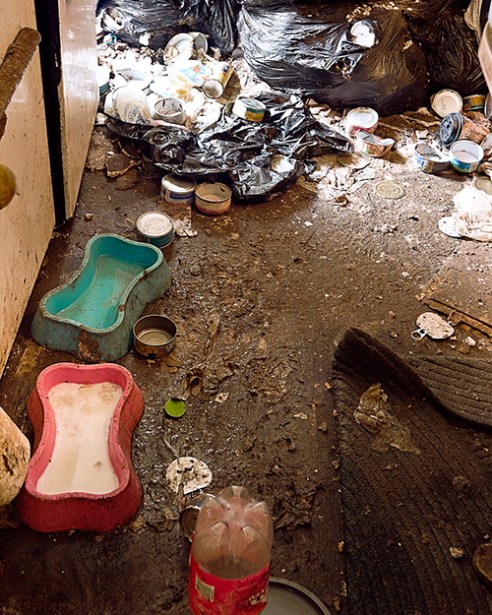Artist and Fine Art Photographer Dave Hebb is the Edge of Humanity Magazine contributor of this documentary photography. These images are from his project ‘The Poverty Of Excess‘. To see Dave’s portfolio click on any image.




My first encounter with an animal hoarding environment was a rundown house in an upscale neighborhood that had been reported to the Ulster County SPCA. The house had been recently purchased by a developer who wanted to tear the house down, but realized that it was illegally occupied and overrun with feral cats. I volunteered to document the conditions of the house as evidence for the SPCA to be used in any legal proceedings against the occupants. Although the photos document the physical condition of the house, they cannot begin to describe the overpowering smell and oppressive psychic energy of being in and around an animal hoarding environment. It was apparent that at least one person was actually living in this house with over 30 cats, as there was fresh milk and food in the refrigerator and a pot of hot coffee on the kitchen counter. The entire house was filled with garbage, feces, mold and the intense and highly concentrated smell of ammonia and rotting organic matter. Most of the garbage bags seen in the photos are completely filled with petrified cat feces, and the “mud” on the floor is actually fresh feces. At the time I considered this to be a uniquely horrific experience and felt compelled to share the images immediately. However, nearly three years later I was called to document another animal cruelty case which was reported to the SPCA. This most recent case in 2014 revealed many similar characteristics; an overabundance of both fresh and rotting food, intense ammonia atmosphere, broken furniture, piles of clothing and other items, and of course cat feces everywhere. In fact, while viewing the photos it’s difficult to note where one environment ends and the other begins. This most recent case was particularly disturbing, as there is no legal remedy for living in the abject squalor that you see depicted in the photos. After over 40 cats were rescued, the occupants were allowed to return to their house under the condition that they were not allowed to keep pets for a certain time period and would be subject to follow up visits from the SPCA to monitor compliance. Sadly, this was not their first offense, nor will this likely be their last. Subsequent visits have shown that the house is in a similar condition, and they cannot own pets for the foreseeable future, although they intend to appeal that decision.




It became clear to me through the visual clues and details of each environment that these were not just portraits of the inhabitants’ mental illness, but spoke to a larger societal phenomenon that went far beyond animal hoarding. These environments are defined by both extreme poverty and excessive consumption; a condition which can only exist in a society where scarcity has been eliminated and even the most economically challenged segments of society can afford to surround themselves with an endless supply of food, clothing and other possessions. I have come to understand that these people who are clearly afflicted with mental illness are also symptoms of a much wider reaching malady that I refer to as the Poverty of Excess.

See also:
By David Hebb

